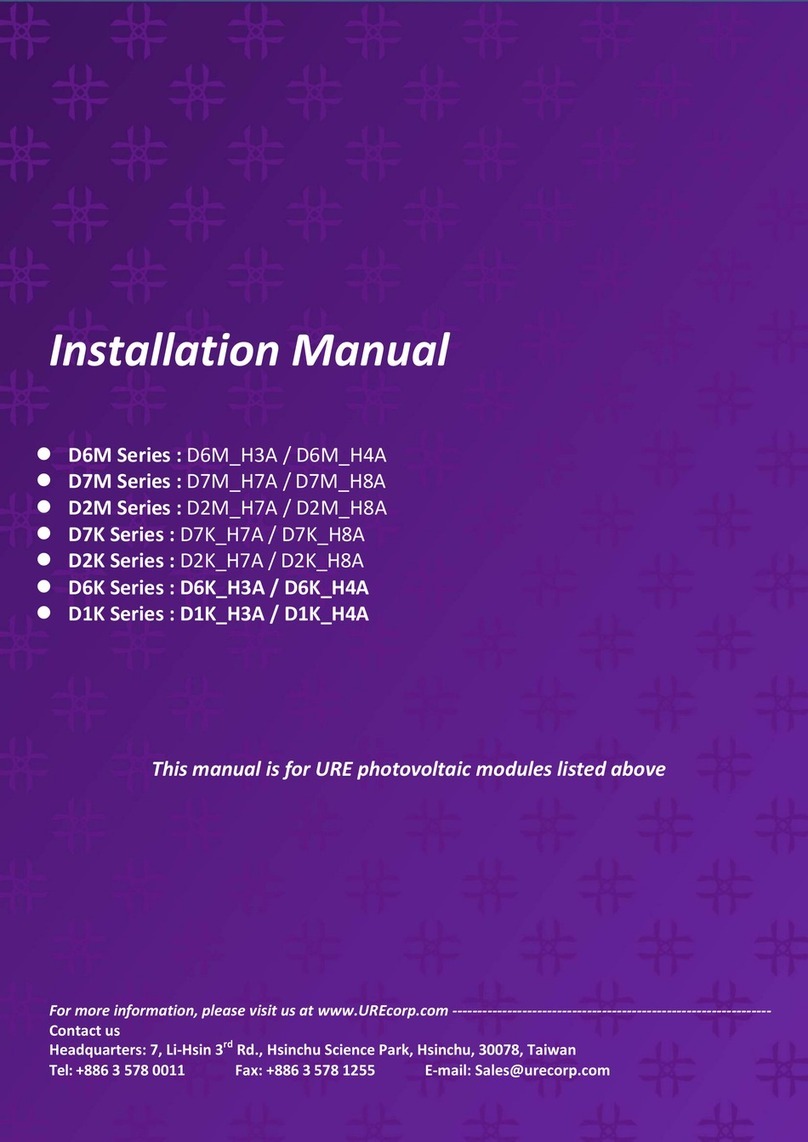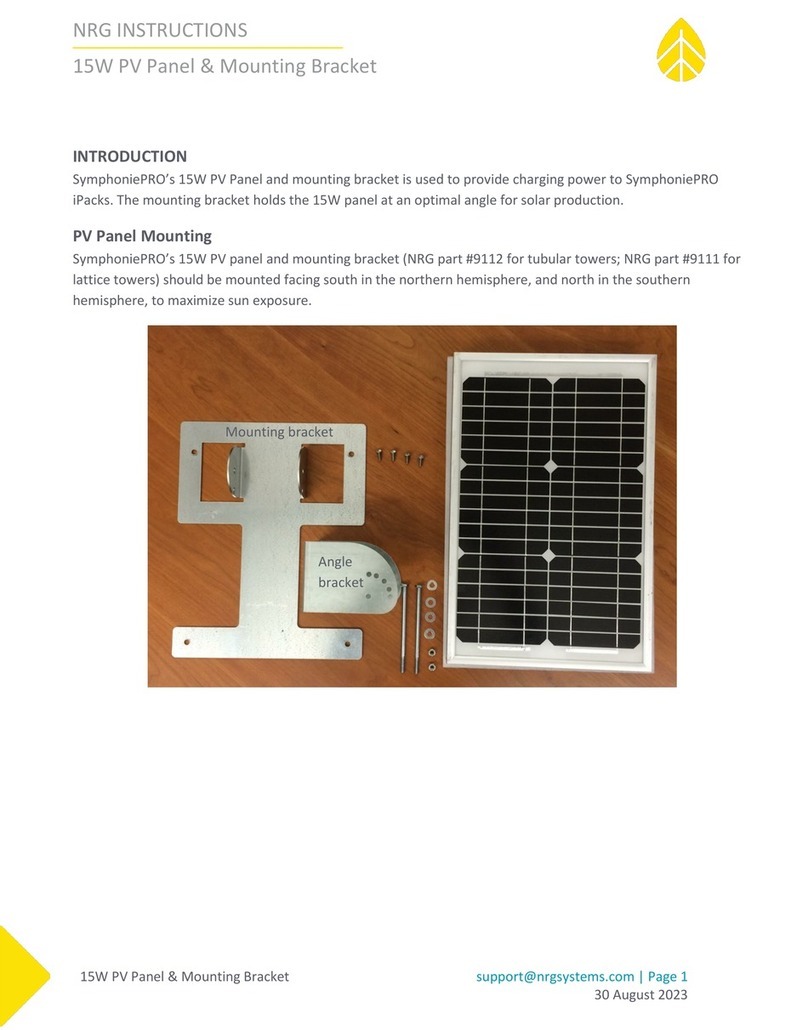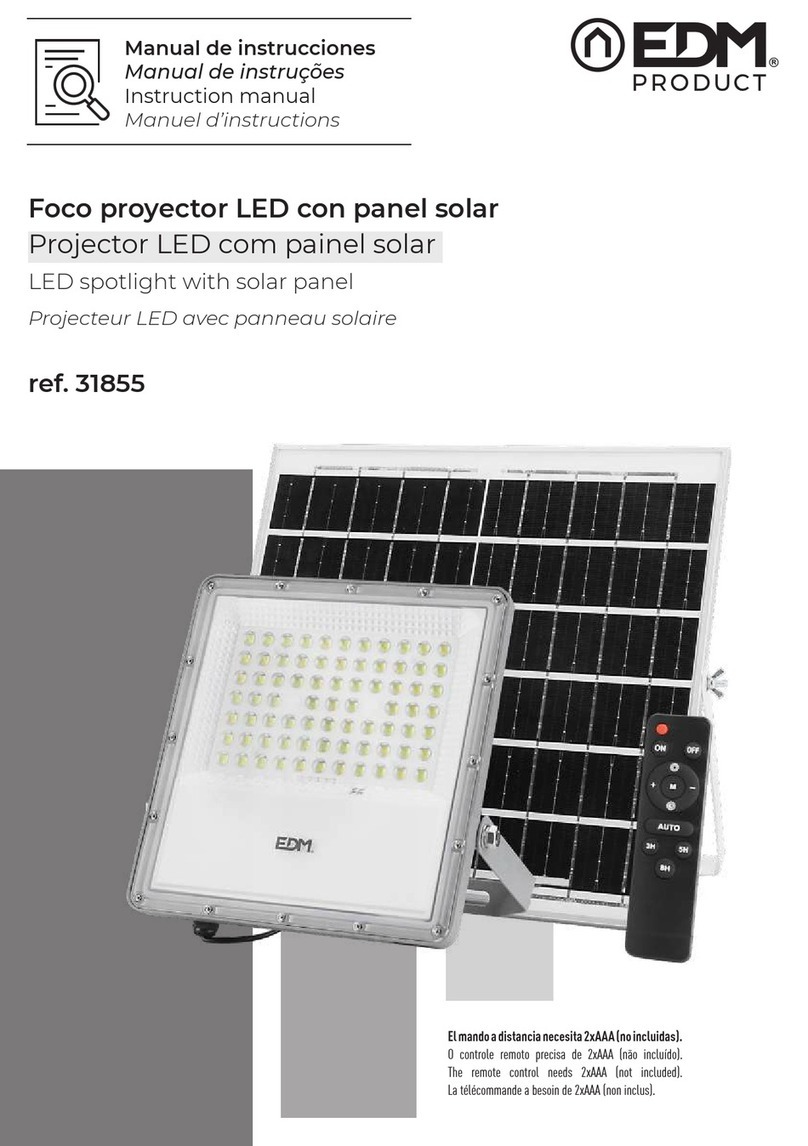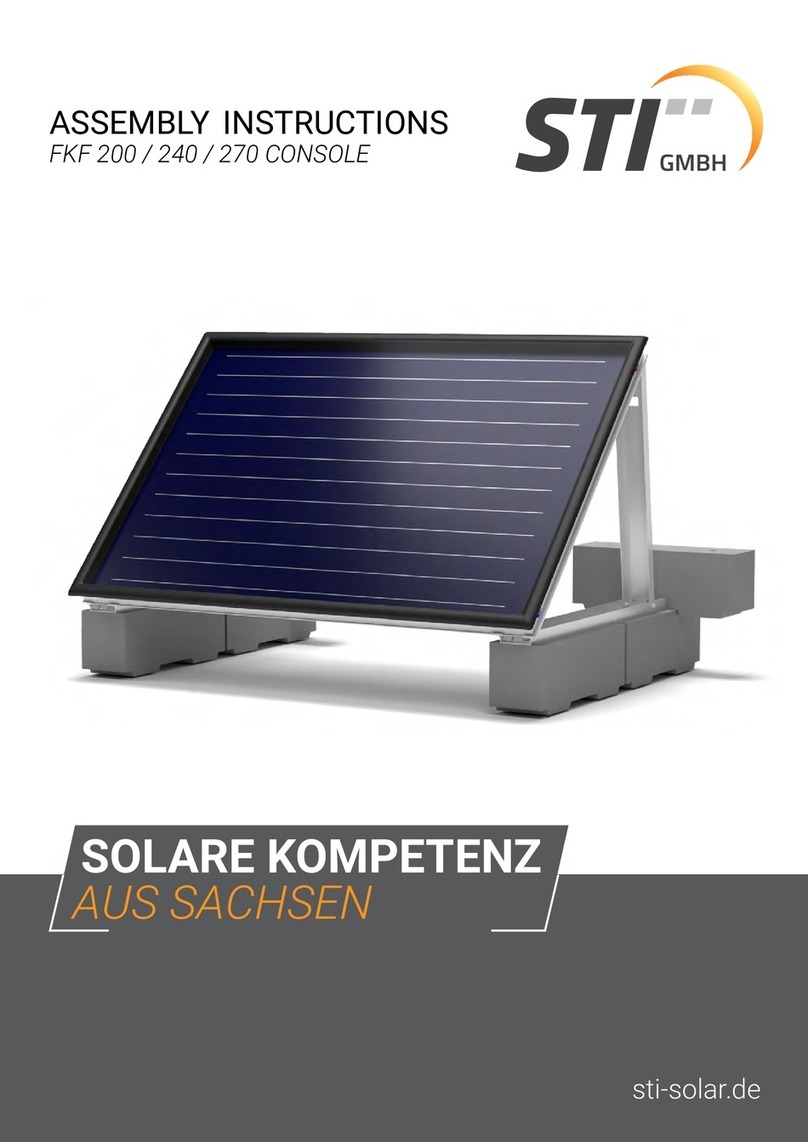Econess Energy EN125M-72 Series User manual

-1-
USER MANUAL
PHOTOVOLTAIC MODULE

-2-
Photovoltaic Module User Manual
Effective April 1, 2020, Version 3.3
Table of Contents:
1. General information………………………………..……....…..…………….3-5
1.1 Overview
1.2 Applicable Products
1.3 Warning
2. Installation……………............................................................................6-11
2.1Installation safety
2.2Installation condition
2.2.1 Operation condition
2.2.2 Site selection
2.2.3 Tilt angle selection
2.3 Mechanical Installation introduction
2.3.1 Fixation with screw
2.3.2 Fixation with clamps
3. Wiring and connection…………………………………………..………..12-14
4. Maintenance and care……………………………..………...………………..15
5. Electrical specification…………………………..………………………..14-37
6. Disclaimer of liability………………………………...………..………………38
7. Contact us…………………………………………………….………………...38

-3-
1. General Information
1.1 Overview
Thanks for choosing Econess Energy PV modules. In order to ensure the PV modules to be
installed correctly, please read the following operation instructions carefully before installing
and using the modules.
Please remember that the products would generate electricity and certain safety measures
need to be taken to avoid danger.
1.2 Applicable Products
This document is applicable to the series of solar module as listed below:
PV Modules with 6" Poly-crystalline Silicon Solar Cells:
72 cells: EN156P-72-xxx (xxx = 300 - 350, in increments of 5)
60 cells: EN156P-60-xxx (xxx = 250 - 290, in increments of 5)
54 cells: EN156P-54-xxx (xxx = 225 - 260, in increments of 5)
48 cells: EN156P-48-xxx (xxx = 200 - 230, in increments of 5)
36 cells: EN156P-36-xxx (xxx = 150 - 175, in increments of 5)
PV Modules with 6" Mono-crystalline Silicon Solar Cells:
72 cells: EN156M-72-xxx (xxx = 330 - 370, in increments of 5)
60 cells: EN156M-60-xxx (xxx = 275 - 305, in increments of 5)
54 cells: EN156M-54-xxx (xxx = 245 - 275, in increments of 5)
48 cells: EN156M-48-xxx (xxx = 220 - 245, in increments of 5)
36 cells: EN156M-36-xxx (xxx = 165 - 185, in increments of 5)
PV Modules with 6" Half-cut Poly-crystalline Silicon Solar Cells:
144 cells: EN156P-144-xxx (xxx = 300 - 355, in increments of 5)
120 cells: EN156P-120-xxx (xxx = 250 - 295, in increments of 5)
PV Modules with 6" Half-cut Mono-crystalline Silicon Solar Cells:
144 cells: EN156M-144-xxx (xxx = 345 - 395, in increments of 5)
120 cells: EN156M-120-xxx (xxx = 290 - 330, in increments of 5)
PV Modules with 6" Half-cut Mono-crystalline Silicon Solar Cells:
144 cells: EN158M-144-xxx (xxx = 360 - 395, in increments of 5)
120 cells: EN158M-120-xxx (xxx = 295 - 330, in increments of 5)
Make sure the array of modules installed with the Maximum permitted system voltage and
the rating current and voltage of the sub-equipments such as regulators and inverters. The
maximum permitted system voltage (DC) of the modules sold in Australia is 1500V
The modules are qualified for application class A, and modules qualified for safety through
IEC61730 within this application class are considered to meet the requirements of Safety
Class II

-4-
1.3
PV modules generate DC electrical energy when exposed to sunlight or other light sources.
Active parts of module such as terminals can result in burns, sparks, and lethal shock
⚫Artificially concentrated sunlight shall not be directed on the module or panel.
⚫Solar modules have a protective glass front. Broken solar module glass is an electrical
safety hazard (electric shock and fire). These modules cannot be repaired and should be
replaced immediately.
◆Electric Shock and Burn Hazard
◆This photovoltaic module produces
◆Electricity when exposed to the sun
⚫To reduce the risk of electrical shocks or burns, modules may be covered with an
opaque material during installation to avoid shocks or burns.
⚫All installations must be performed in compliance with the National Electrical Code (NEC)
and modules installed in Canada need to follow Canadian electric code.
⚫The installation work of the PV array can only be done under the protection of
sun-sheltering covers or sunshades and only qualified person can install or perform
maintenance work on this module.
⚫Follow the battery manufacture‘s recommendations if batteries are used with module
⚫Do not use this module to replace or partly replace roofs and walls of living buildings.
⚫Do not install modules where flammable gas may be present.
⚫Do not touch live terminals with bare hands. Use insulated tools for electrical
connections.
warning

-5-
⚫Do not remove any part installed by Econess Solar or disassemble the module.
⚫All instructions should be read and understood before attempting to install, wire, operate
and maintain the module.
⚫Please don’t lift up PV modules using the attached cables or the junction box.
⚫All PV systems must be earthed. If there is no special regulation, please follow the
National Electrical Code or other national code.
⚫Under normal conditions, a photovoltaic module is likely to experience conditions that
produce more current and/or voltage than reported at standard test conditions.
Accordingly, the value of Isc and Voc marked on this module should be multiplied by
1.25 when determining component voltage ratings, conductor current ratings, fuse sizes,
and size of controls connected to the PV output.
⚫Once the PV module has been shipped to the installation site, all of the parts should be
unpacked properly with care.
⚫Do not stand or step on the PV module like below pictures show,this is prohibited
and .there is a risk of damage the module and cause injury for you.
⚫Only PV modules with the same cell size should be connected in series.
⚫During all transportation situations, please make sure no huge shock for the vehicle or
the modules, as this may damage the module or lead the cell to be crack.
⚫During all transportation situation, never let the module fall down from the vehicle, house
or hands. This will break the cells of the modules.
⚫Do not clean the glass with chemicals.
⚫Do not disconnect any of the module when it is under load.
1.4 Fire prevention
The modules are rated fire Class C, and are suitable for mounting over a Class C roof.To
maintain the corresponding fire prevention level, the tilt angle should be no less than 5
in/ft (127 mm/305 mm) when the modules are mounted on the roof.

-6-
2. Installation
2.1 Installation safety
⚫Always wear protective head gear, insulating gloves and safety shoes (with rubber
soles).
⚫Keep the PV module packed in the carton until installation.
⚫Do not touch the PV module unnecessarily during installation. The glass surface and the
frame may be hot. There is a risk of burns and electric shock.
⚫Do not work in rain, snow or windy conditions.
⚫Due to the risk of electrical shock, do not perform any work if the terminals of the PV
module are wet.
⚫Use insulated tools and do not use wet tools.
⚫When installing PV modules, do not drop any objects (e.g., PV modules or tools).
⚫Make sure flammable gasses are not generated or present near the installation site.
⚫Insert interconnect connectors fully and correctly. Check all connections.
The interconnect cable should be securely fastened to the module frame, Cable support
should be done in a way to avoid the connector from scratching or impacting the back
sheet of the module.
⚫Do not touch the terminal box and the end of the interconnect cables (connectors) with
bare hands during installation or under sunlight, regardless of whether the PV module is
connected to or disconnect from the system.
⚫Do not expose the PV module to excessive loads on the surface of the PV module or
twist the frame.
⚫Do not hit or put excessive load on the glass or back sheet, this may break the Cells or
cause micro crack.
⚫During the operation, don’t use sharp tools to wipe the back sheet and glass, it would
leave scratch on the module.
⚫Do not drill holes on the frame, it may cause corrosion of the frame.
⚫For BIPV or roof mounting structure, when install the modules, please try to follow the
“from top to bottom”and/or “from left to right”principle, and don’t step on the module,
that will damage the module and would be dangerous for personal safety. The roof
installation of modules may affect the fireproof performance of building structure.
2.2 Installation Condition
2.2.1 Climate condition
Please install the modules in the following conditions:
a) Operating temperature: within –40°C (-40°F) to 85°C (185°F)
b) Relative humidity: within 45% to 95%.

-7-
﹡Note: The mechanical load bearing (include wind and snow loads) of the module is based
on the mounting methods. The professional system installer must be responsible for
mechanical load calculation according to the system design.
2.2.2 Site selection
In most applications, Econess solar PV modules should be installed in a location where they
will receive maximum sunlight throughout the year. In the Northern Hemisphere, the module
should typically face south, and in the Southern Hemisphere, the modules should typically
face north. Modules facing 30 degrees away from true South (or North) will lose
approximately 10 to 15 percent of their power output. If the module faces 60 degrees away
from true South (or North), the power loss will be 20 to 30 percent.
When choosing a site, avoid trees, buildings or obstructions, which could cast shadows on
the solar photovoltaic modules especially during the winter months when the arc of the sun
is lowest over the horizon. Shading causes loss of output, even though the factory fitted
bypass diodes of the PV module will minimize any such loss.
Do not install the PV module near naked flame or flammable materials. The spacing
between the PV modules and the installation flat should be at least 15cm.
When solar modules are used to charge batteries, the battery must be installed in a manner,
which will protect the performance of the system and the safety of its users. Follow the
battery manufacturer’s guidelines concerning installation, operation and maintenance
recommendations. In general, the battery (or battery bank) should be away from the main
flow of people and animal traffic. Select a battery site that is protected from sunlight, rain,
snow, debris, and is well ventilated. Most batteries generate hydrogen gas when charging,
which can be explosive. Do not light matches or create sparks near the battery bank. When
a battery is installed outdoors, it should be placed in an insulated and ventilated battery case
specifically designed for the purpose.
Do not install the PV module in a location where it would be immersed in water or continually
exposed to water from a sprinkler or fountain etc.
2.2.3 Tilt angle selection
The tilt angle of the PV module is measured between the surface of the PV module and a
horizontal ground surface (Figure 1). The PV module generates maximum output power
when it faces the sun directly.
Figure1: PV module title angle

-8-
For standalone systems with batteries where the PV modules are attached to a permanent
structure, the tilt angle of the PV modules should be selected to optimize the performance
based on seasonal load and sunlight. In general, if the PV output is adequate when
irradiance is low (e.g., winter), then the angle chosen should be adequate during the rest of
the year. For grid-connected installations where the PV modules are attached to a
permanent structure, PV modules should be tilted so that the energy production from the PV
modules will be maximized on an annual basis.
2.3 Mechanical Installation introduction
Solar PV modules can be mounted using the following methods:
﹡Note: All installation methods herein are only for reference, and Econess solar will not
provide related mounting components, the system installer or trained professional personnel
must be responsible for the PV system’s design, installation, and mechanical load
calculation and security of the system.
﹡Note: before installing, you should confirm below important things:
1) Visual check before installation, to make sure there is no bug in the packing and junction
box as well as the surface of module, If have , remove and clean it .
2) Check the series number is right or not.
﹡Note: for UL 1703 , Econess modules are designed to meet a maximum positive (or
upward) and negative (or downward,) pressure of 30 lb/ft²,for IEC 61730-2 , the module
has passed Mechanical loading test 5400Pa(for mono series),2400Pa(for poly series).
When mounting modules in snow-prone or high-wind environments, Special care should be
taken to mount the modules in a manner that provides sufficient design strength while
meeting local code requirements
2.3.1 Screw fitting:
The frame of each module has 8 mounting holes (Length* Width: 14mm*9mm) used to
secure the modules to support structure. you can use the four symmetry holes close to the
inside on module frame, if excessive wind or snow load are expected, you must use all the
eight mounting holes. the mechanical load of the PV modules mounted through the inside
mounting holes is 2400 Pa, if the outside mounting holes are further used, the mechanical
load is 5400 Pa. The module frame must be attached to a mounting rail using M8
corrosion-proof screws together with spring washers and flat washers in eight symmetrical
locations on the PV module. The applied torque should be big enough to fix it steadily.
Please find detailed mounting information in the below illustration,

-9-
Figure 2 above: PV module installed with Screw fitting method*
2.3.2 Independent installation of Z-type clamp single module
The module clamps should not come into contact with the front glass and must not deform
the frame. Be sure to avoid shadowing effects from the module clamps.
The installation adopts Z-type clamp to ensure that each single module installation frame
can bear the mechanical load test includes wind load 2400Pa and snow load 5400Pa
independently.
The 2400Pa takes the inside mounting hole position as benchmark, and fix clamp
transverse bar
The 5400Pa takes the inside installation hole position as benchmark, and fix clamp
transverse bar.
8 9*14mm mounting holes
lght
The inner mounting holes
lght
The outside mounting holes

-10-
The detailed installation method shall be seen in the following sketch:
Figure3 above: PV module installed at long side with Clamp fitting method
A*B J K M O N P
EN125M-72-xxx Mono 6*12 1580*808 300 400 5~10 0.5~2mm ≥ 1 4 > 2m m
EN125M-96-xxx Mono 8*12 1580*1064 280 400 5~10 0.5~2mm ≥ 1 4 > 2 mm
EN156P-60-xxx poly 6*10 1640*992 280 420 5~10 0.5~2mm ≥ 1 4 > 2m m
EN156M-60-xxx Mono 6*10 1640*992 280 420 5~10 0.5~2mm ≥ 1 4 > 2m m
EN156P-60-xxx poly 6*10 1650*992 280 420 5~10 0.5~2mm ≥ 1 4 > 2m m
EN156M-60-xxx Mono 6*10 1650*992 280 420 5~10 0.5~2mm ≥ 1 4 > 2m m
EN156P-72-xxx poly 6*12 1956*992 280 480 5~11 0.5~2mm ≥ 1 4 > 2m m
EN156M-72-xxx Mono 6*12 1956*992 280 480 5~11 0.5~2mm ≥ 1 4 > 2m m
EN156P-72-xxx poly 6*12 1960*992 280 480 5~11 0.5~2mm ≥ 1 4 > 2m m
EN156M-72-xxx Mono 6*12 1960*992 280 480 5~11 0.5~2mm ≥ 1 4 > 2m m
EN156M-120-xxx Mono 6*10*2 1675*992 280 420 5~11 0.5~2mm ≥ 14 > 2m m
EN156P-120-xxx poly 6*10*2 1675*992 280 420 5~11 0.5~2mm ≥ 14 > 2m m
EN156P-144-xxx poly 6*12*2 2000*992 280 480 5~11 0.5~2mm ≥ 14 > 2m m
EN156M-144-xxx Mono 6*12*2 2000*992 280 480 5~11 0.5~2mm ≥ 14 > 2m m
Moudle type
Cell type
Cell
quantity
Dimensions(mm)
Table 1 above: Mechanical dimensions when modules installed at long side with Clamp fitting method

-11-
Figure 4 above: PV module installed at short side with Clamp fitting method
A*B J K M O N P
EN125M-72-xxx Mono 6*12 1580*808 50 200 5~10 0.5~2mm ≥ 14 > 2mm
EN125M-96-xxx Mono 8*12 1580*1064 50 260 5~10 0.5~2mm ≥ 1 4 > 2m m
EN156P-60-xxx poly 6*10 1640*992 50 240 5~10 0.5~2mm ≥ 14 > 2mm
EN156M-60-xxx Mono 6*10 1640*992 50 240 5~10 0.5~2mm ≥ 14 > 2mm
EN156P-60-xxx poly 6*10 1650*992 50 240 5~10 0.5~2mm ≥ 14 > 2mm
EN156M-60-xxx Mono 6*10 1650*992 50 240 5~10 0.5~2mm ≥ 14 > 2mm
EN156P-72-xxx poly 6*12 1956*992 50 240 5~11 0.5~2mm ≥ 14 > 2mm
EN156M-72-xxx Mono 6*12 1956*992 50 240 5~11 0.5~2mm ≥ 14 > 2mm
EN156P-72-xxx poly 6*12 1960*992 50 240 5~11 0.5~2mm ≥ 14 > 2mm
EN156M-72-xxx Mono 6*12 1960*992 50 240 5~11 0.5~2mm ≥ 14 > 2mm
EN156P-120-xxx poly 6*10*2 1675*992 50 240 5~10 0.5~2mm ≥ 14 > 2 mm
EN156M-120-xxx Mono 6*10*2 1675*992 50 240 5~10 0.5~2mm ≥ 14 > 2 mm
EN156P-144-xxx poly 6*12*2 2000*992 50 240 5~11 0.5~2mm ≥ 14 > 2 mm
EN156M-144-xxx Mono 6*12*2 2000*992 50 240 5~11 0.5~2mm ≥ 14 > 2 mm
Moudle type
Cell type
Cell
quantity
Dimensions(mm)
Table 2 above: Mechanical dimensions when modules installed at short side with Clamp fitting method

-12-
3. Wiring and connection
a) Before this procedure, please read the operation instructions of the PV system carefully.
Make wiring by Multi-connecting cables between the PV modules in series or parallel
connection, which is determined by user’s configuration requirement for system power,
current and voltage.
b) PV module connected in series should have similar current. Modules must not be
connected together to create a voltage higher than the permitted system voltage(1500V
DC), as reference the maximum number of modules in series (N) can be easily calculated
by dividing the Maximum System Voltage of the modules by the respective Voc value of
the module. Any more please always take into consideration the variation of the voltage
under different temperatures, the Voc of the modules will be rise when the temperature
drops.
c) PV module connect in parallel should have similar voltage. As reference the maximum
number of modules in parallel (M) can be easily calculated by dividing the maximum rated
current (indicated in the electrical specification below) by Isc value of the module, and
then plus 1. Any more please always take into consideration the variation of the current
under different temperatures, the Isc of the modules will be rise when the temperature
goes up.
d) Open the connection box of the control system and connect the cabled from the PV arrays
to the connection box in accordance with the installation indication of the PV control
systems. The cross-sectional area and cable connector capacity must satisfy the
maximum short-circuit of PV system (For a single component, we recommended the
cross-sectional area of cables is 4mm2 and the rated current of connectors is more than
10A), otherwise cables and connectors will become overheating for large current. Please
pay attention: the temperature limit of cables is 90℃and the temperature limit of
connector 85℃.For field connection,we recommended the cross-sectional area of cables
is 4mm2 and the rated current of connectors is more than 10A)
e) All module frames and mounting racks must be properly grounded in accordance with
local and national electrical codes. Please refer to the below drawing. It is recommended
that the applied torque is 2.3 to 2.8N.m.

-13-
Econess modules can also be grounded using third party ground washers or clip devices as
long as the products are approved for grounding metallic frames of PV modules.
Alternate grounding options built into the racking system are acceptable so long as they
have been UL approved

-14-
f) Follow the requirements of applicable local and national electrical codes.
g) These modules contain factory installed bypass diode .if these modules are incorrectly
connected to each other, the bypass diodes, cable or junction box may be damaged.
h) The module shall wire in accordance with the NEC, the grounding method of the frame of
arrays shall comply with the NEC, article 250
i) It is recommended that the screw be tightened to a torque of 2.3 and 2.8NM
j) The cable of the junction box is defined as L1, as showed below. For Econess Energy
standard module, L1 is 900 mm; and for customized module, L1 can be 1000mm. Please
base on your condition, take the cable length into consideration before designing the
wiring layout.

-15-
4. Maintenance and care
a) A built up of dust or dirt on the module(s) front face will result in a decreased energy
output. Clean the panel(s) preferably once per annum if possible (depend on site
conditions) using a soft cloth dry or damp, as necessary.
b) Never use abrasive material under any circumstances.
c) Examine the PV module(s) for signs of deterioration. Check all wiring for possible rodent
damage, weathering and that all connections are tight and corrosion free. Check electrical
leakage to ground.
d) Check fixing screws and mounting brackets are tight, adjust and tighten as necessary.
e) When clean the modules, it is not allowed to stand on the module or the likes. Like below
pictures show, this it prohibited.
5. Electrical specification
The module electrical rating is measured under Standard Test Conditions, which are
1000W/m2, irradiance with AM 1.5 spectrum and 25 deg (77°F) ambient temperature. The
module might produce more or less voltage or current than rating value in uncertainty
condition. Accordingly, the values of ISC and VOC marked on this module should be multiplied
by a factor of 1.25 when determining component voltage ratings, conductor current ratings,
fuse sizes,
and size of controls connected to the PV output. Tables below are electrical characteristics
of PV products at STC and the tolerance of Isc,Voc,Vmp and Imp is±5%.

-16-
5.1.Electrical specifications of EN156P-72- xxx (xxx=300-350) Series Poly-crystalline solar modules
Module Type
EN156P-72
-300
EN156P-7
2-305
EN156P-72
-310
EN156P-72
-315
EN156P-72
-320
EN156P-7
2-325
EN156P-72
-330
EN156P-
72-335
EN156P-72
-340
EN156P-72
-345
EN156P-72
-350
Maximum Power (Pmax)
300
305
310
315
320
325
330
335
340
345
350
Maximum Power Voltage
(Vmp)
35.85
36.19
36.48
36.80
37.11
37.43
37.73
38.04
38.31
38.55
38.81
Maximum Power Current
(Imp)
8.37
8.43
8.50
8.56
8.63
8.69
8.75
8.81
8.88
8.95
9.02
Open-circuit Voltage (Voc)
44.40
44.71
44.97
45.24
45.52
45.71
45.90
46.23
46.44
46.68
46.93
Short-circuit Current (Isc)
8.86
8.94
9.02
9.09
9.16
9.23
9.29
9.33
9.40
9.48
9.55
Maximum system voltage
1500V (IEC) DC
Maximum rated current
series
15A
Dimensions
1960×992×H mm (H=35、40、45、50.mm)

-17-
5.2.Electrical specifications of EN156P-60- xxx (xxx=250-290)Series Poly-crystalline solar modules
Module Type
EN156P-60
-250
EN156P-60
-255
EN156P-60
-260
EN156P-60
-265
EN156P-60
-270
EN156P-6
0-275
EN156P-60-
280
EN156P-60-285
EN156P-60-290
Maximum Power (Pmax)
250
255
260
265
270
275
280
285
290
Maximum Power Voltage
(Vmp)
30.16
30.45
30.72
31.04
31.35
31.71
32.05
32.33
32.64
Maximum Power Current
(Imp)
8.30
8.38
8.47
8.55
8.62
8.68
8.75
8.82
8.89
Open-circuit Voltage (Voc)
37.35
37.63
37.92
38.22
38.51
38.69
39.02
39.31
39.60
Short-circuit Current (Isc)
8.87
8.93
8.98
9.04
9.09
9.16
9.24
9.30
9.36
Module Efficiency(%)
15.27%
15.58%
15.88%
16.19%
16.50%
16.80%
17.11%
17.41%
17.72%
Maximum system voltage
1500V (IEC) DC
Maximum rated current
series
15A
Dimensions
1650×992×H mm (H=35、40、45mm)

-18-
5.3.Electrical specifications of EN156P-54- xxx(xxx = 225 - 260) Series Poly-crystalline solar modules
Module Type
EN-156M-54-2
25
EN-156M-54-2
30
EN-156M-54-2
35
EN-156M-54-2
40
EN-156M-54-2
45
EN-156M-54-2
50
EN-156M-54-2
55
EN-156M-54-2
60
Maximum Power at
STC(Pmax)
225Wp
230Wp
235Wp
240Wp
245Wp
250Wp
255Wp
260Wp
Maximum Power Voltage
(Vmp)
27.4V
27.49V
27.63V
27.78V
28V
28.22V
28.37V
28.55V
Maximum Power Current
(Imp)
8.21A
8.36A
8.51A
8.63A
8.75A
8.87A
8.99A
9.11A
Open-circuit Voltage (Voc)
33.62V
33.74V
33.91V
34.09V
34.36V
34.63V
34.81V
35.02V
Short-circuit Current (Isc)
8.69A
8.85A
9.01A
9.14A
9.26A
9.38A
9.51A
9.63A
Maximum system Voltage
1500V (IEC) DC
Dimensions
1482x992x35mm
Maximum rated current
series(A)
15A

-19-
5.4.Electrical specifications of EN156P-48-xxx (xxx=200-230) Series Poly-crystalline solar modules
Module Type
EN-156M-48-20
0
EN-156M-48-2
05
EN-156M-48-210
EN-156M-48-215
EN-156M-48-2
20
EN-156M-48-225
EN-156M-48-230
Maximum Power at
STC(Pmax)
200Wp
205Wp
210Wp
215Wp
220Wp
225Wp
230Wp
Maximum Power Voltage
(Vmp)
24.73V
24.85V
24.97V
25.09V
25.26V
25.43V
25.59V
Maximum Power Current (Imp)
8.09A
8.25A
8.41A
8.57A
8.71A
8.85A
8.99A
Open-circuit Voltage (Voc)
30.35V
30.5V
30.64v
30.79V
31V
31.21V
31.39V
Short-circuit Current (Isc)
8.57A
8.74A
8.9A
9.07A
9.22A
9.37A
9.53A
Maximum system Voltage
1500V (IEC) DC
Dimensions
1325x992x35mm
Maximum rated current
series(A)
15A

-20-
5.5.Electrical specifications of EN156P-36 xxx(xxx=150-175) Series Poly-crystalline solar modules
Module Type
EN-156M-36-150
EN-156M-36-155
EN-156M-36-160
EN-156M-36-165
EN-156M-36-170
EN-156M-36-175
Maximum Power at STC(Pmax)
150Wp
155Wp
160Wp
165Wp
170Wp
175Wp
Maximum Power Voltage (Vmp)
19V
19.23V
19.38V
19.53V
19.70V
19.86V
Maximum Power Current (Imp)
7.89A
8.08A
8.27A
8.46A
8.61A
8.81A
Open-circuit Voltage (Voc)
23.32V
23.6V
23.78V
23.97V
24.08V
24.25V
Short-circuit Current (Isc)
8.35A
8.56A
8.76A
8.96A
9.16A
9.33A
Maximum system Voltage
1500V (IEC) DC
Dimensions
1008x992x35mm
Maximum rated current series(A)
15A
This manual suits for next models
158
Table of contents
Popular Solar Panel manuals by other brands
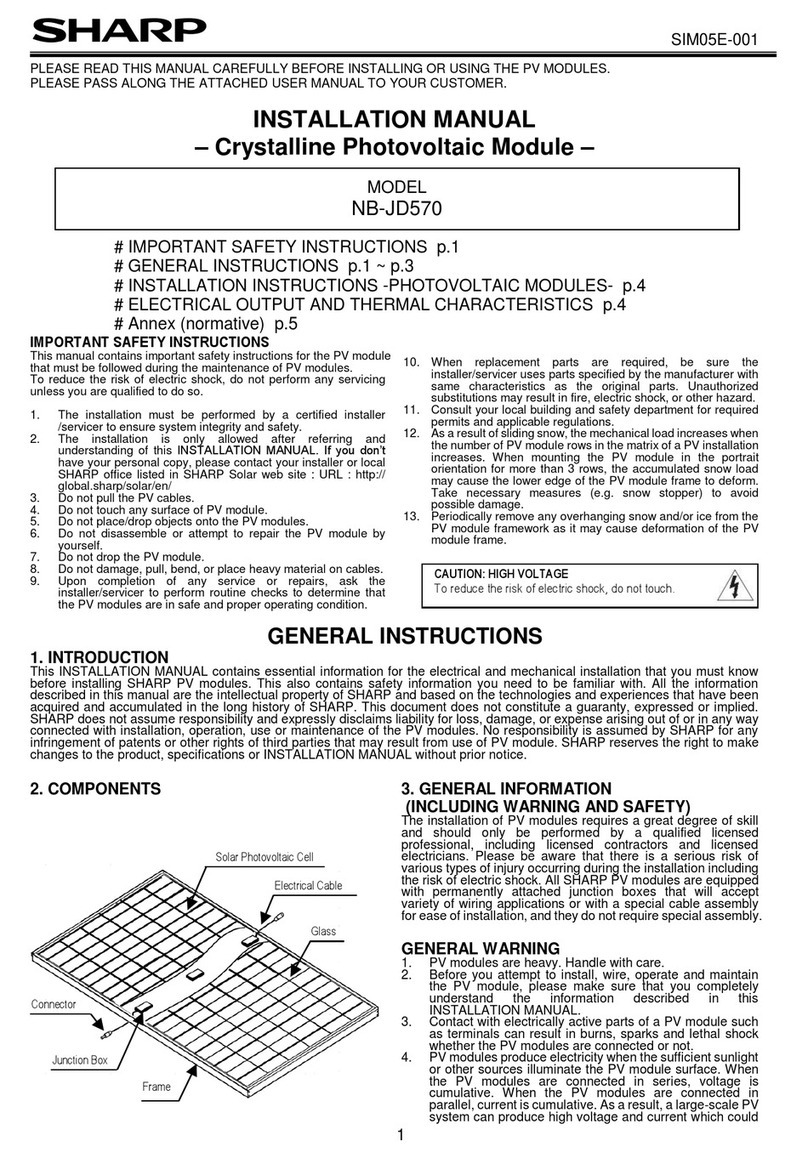
Sharp
Sharp NB-JD570 installation manual

Viessmann
Viessmann Vitosol 200-T Service instructions for contractors
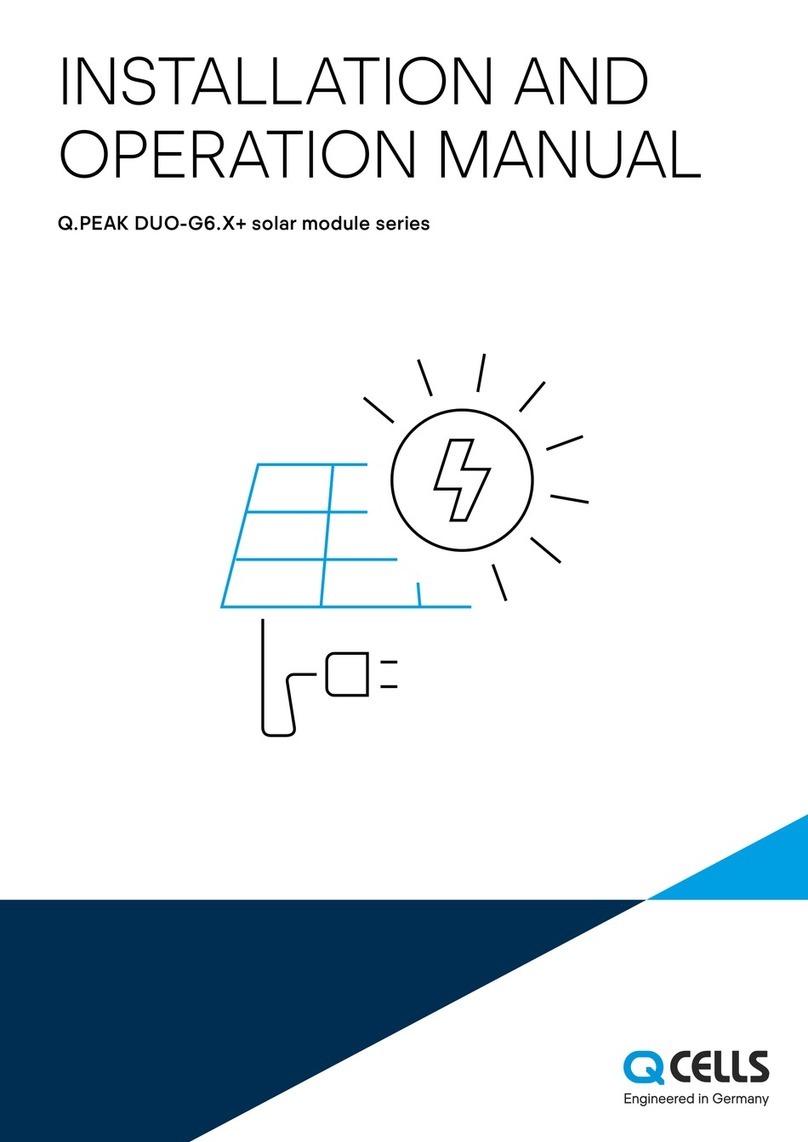
Qcells
Qcells Q.PEAK DUO-G6 Series Installation and operation manual
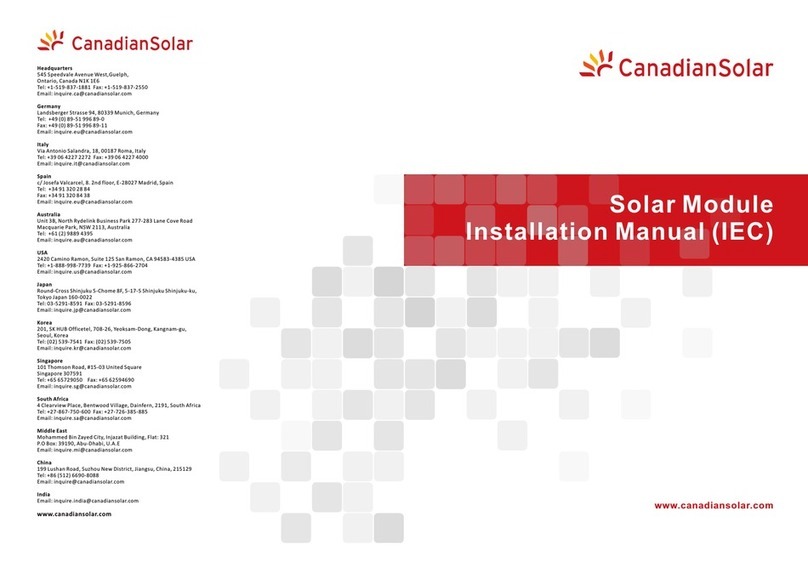
CanadianSolar
CanadianSolar CS6P-PE installation manual
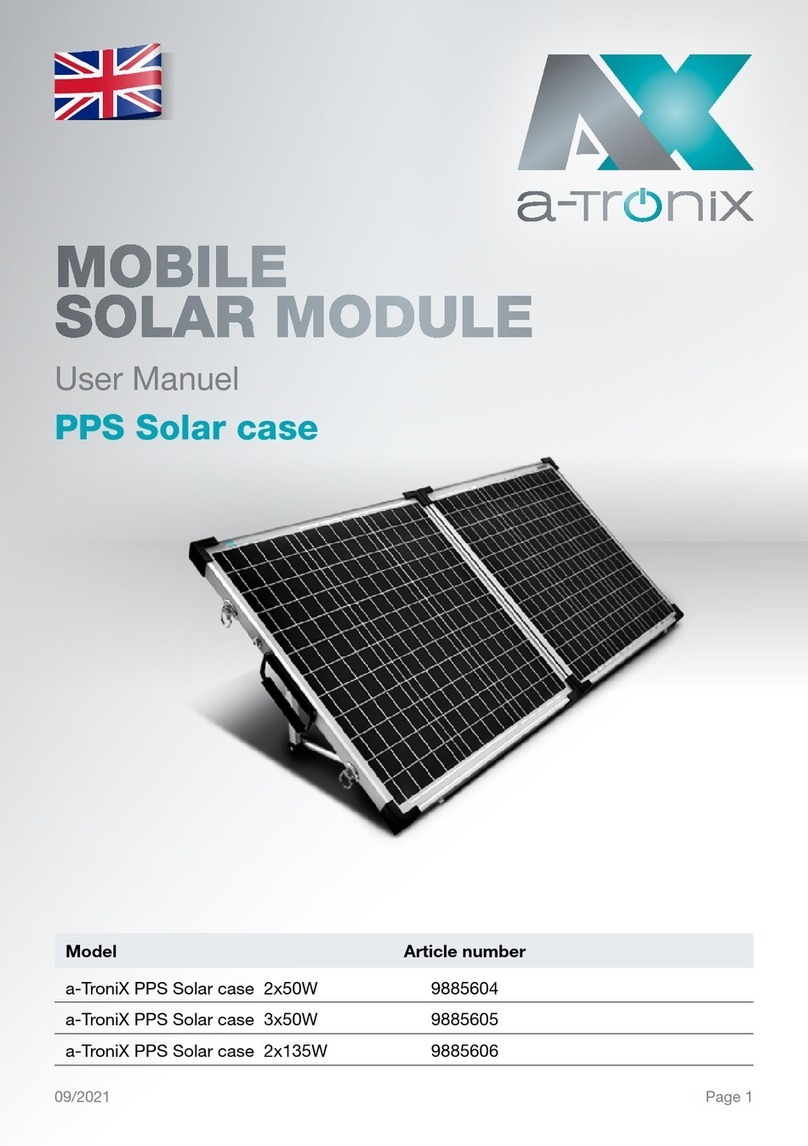
Atronix
Atronix PPS Solar case user manual
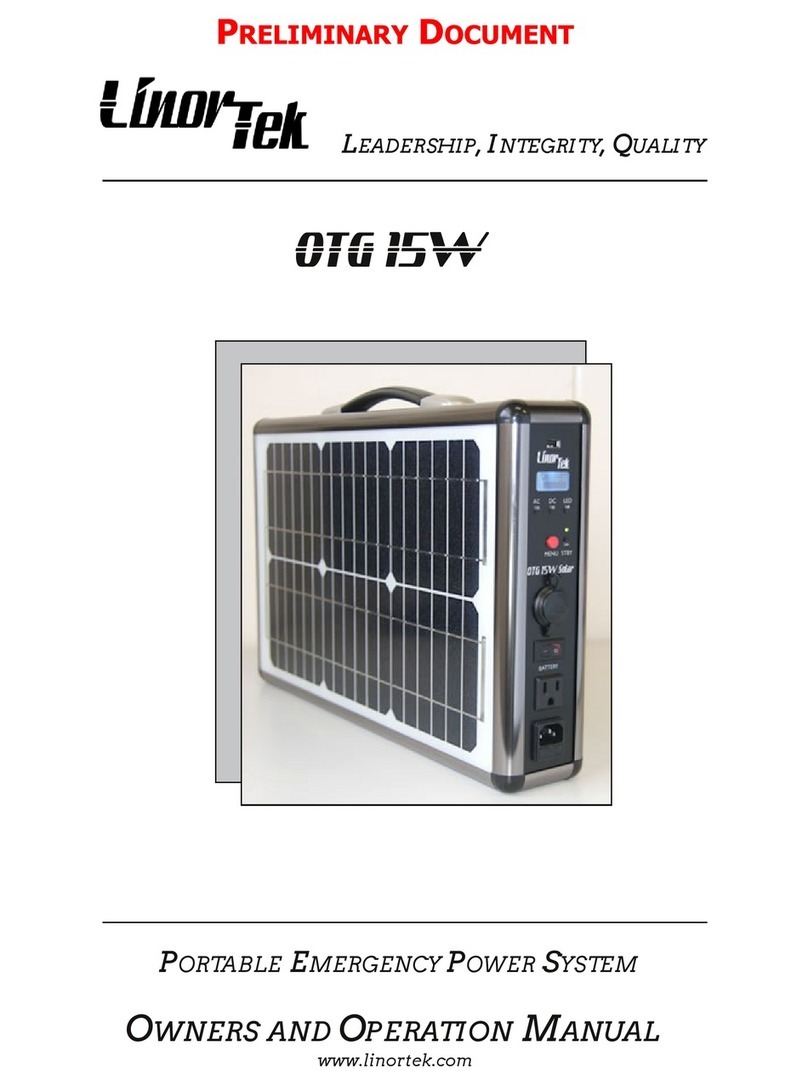
Linortek
Linortek OTG 15W Owners and operation manual
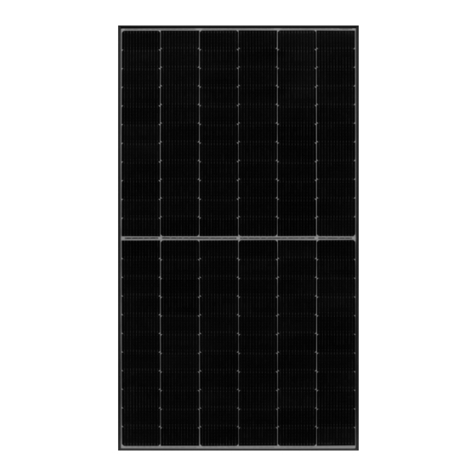
Qcells
Qcells Q.PEAK DUO-G10 Series Installation and operation manual

GOAL ZERO
GOAL ZERO Nomad 20 user guide
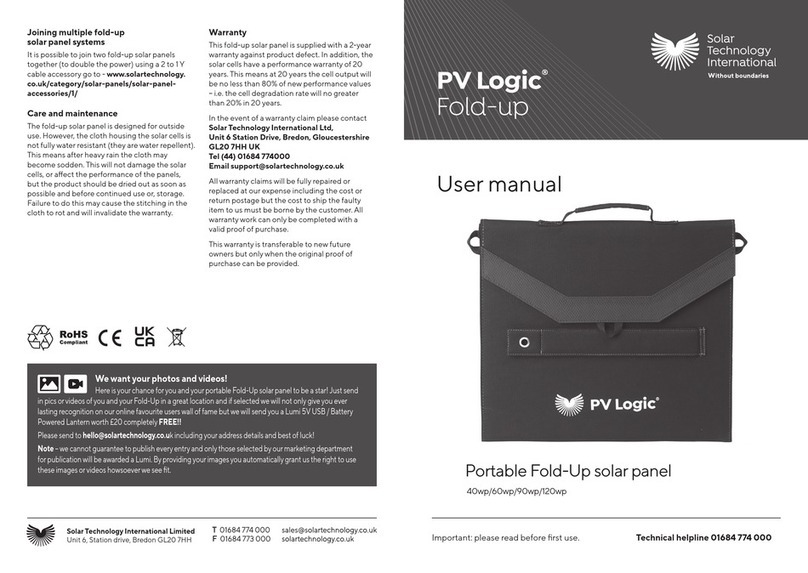
Solartech
Solartech PV Logic user manual

CanadianSolar
CanadianSolar CS3U-MB-FG installation manual

KICK ASS
KICK ASS KARTSP170 user manual

Qcells
Qcells Q.PEAK DUO XL-G11.X / BFG Series Installation and operation manual
